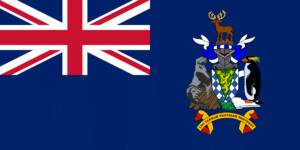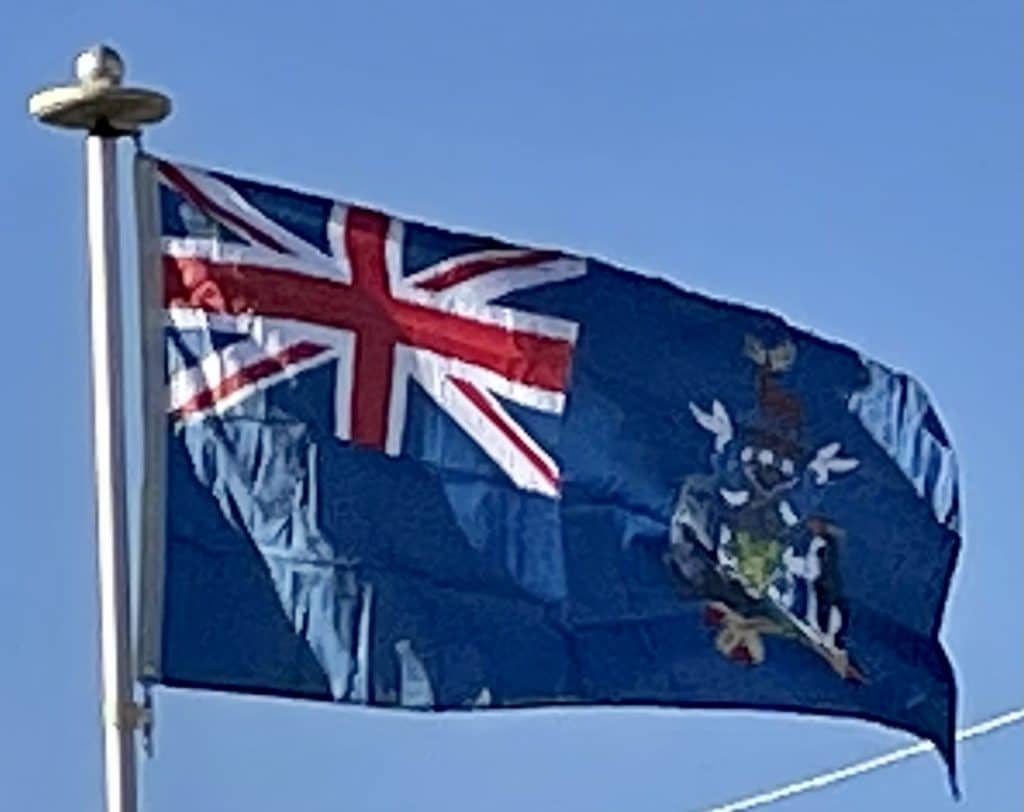Smaller islands and islets off the coast of South Georgia Island include:
|
|
These remote rocks are also considered part of the South Georgia Group:
- Shag Rocks, 185 km (115 mi; 100 nmi) west-northwest of South Georgia Island
- Black Rock, 169 km (105 mi; 91 nmi) west-northwest of South Georgia Island
- Clerke Rocks, 56 km (35 mi; 30 nmi) east-southeast of South Georgia Island
South Sandwich Islands:

The South Sandwich Islands (Spanish: Islas Sandwich del Sur) comprise 11 mostly volcanic islands (excluding tiny satellite islands and offshore rocks), with some active volcanoes. They form an island arc running north–south in the region 56°18’–59°27’S, 26°23’–28°08’W, between about 350 and 500 mi (300 and 430 nmi; 560 and 800 km) southeast of South Georgia.
The northernmost of the South Sandwich Islands form the Traversay Islands and Candlemas Islands groups, while the southernmost make up Southern Thule. The three largest islands – Saunders, Montagu, and Bristol – lie between the two. The Islands’ highest point is Mount Belinda (1,370 m or 4,495 ft) on Montagu Island. The fourth highest peak, Mount Michael (990 m or 3,248 ft) on Saunders Island has a persistent lava lake, known to occur at only eight volcanoes in the world.
The South Sandwich Islands are uninhabited, though a permanently staffed Argentine research station was located on Thule Island from 1976 to 1982. Automatic weather stations are on Thule Island and Zavodovski. To the northwest of Zavodovski Island is the Protector Shoal, a submarine volcano.

Economy:
Commercial sealing occurred on the islands between 1817 and 1909. During that period 20 visits are recorded by sealing vessels.
Economic activity in South Georgia and the South Sandwich Islands is limited. The territory has revenues of £4.5 million, 80% of which is derived from fishing licenses (2011 figures). Other sources of revenue are the sale of postage stamps and coins, tourism, and customs and harbor dues.
Transportation:
There is no airport on the islands. Access is strictly via government research vessels and increasingly via cruise ships visiting the Antarctic Peninsula. Charter cruises are also available from the Falkland Islands. Private yachts can apply for permission to land as well although there is only one allowed landing on South Georgia.
Flag of South Georgia and the South Sandwich Islands:
The flag of South Georgia and the South Sandwich Islands was granted on 3 October 1985, when the Territory was created. Previously the Territory was a part of the former Falkland Islands Dependencies and used the same flag as the Falklands Islands.

The new territory of South Georgia and the South Sandwich Islands (SGSSI) was created in 1985, as is evidenced by the letters patent and order in council that are shown in full on the South Georgia government website. Prior to 1985, the area had been administered as a dependency of the Falkland Islands. The arms of South Georgia and the South Sandwich Islands were granted by royal warrant on February 14, 1992. The website of the SGSSI has a copy of the warrant, which addresses the arms only, and does not mention any flag. After the arms were granted in February 1992, the government of SGSSI started using them on the British Blue Ensign as is customary in British dependencies. The Flag Bulletin, XXXII:2 (1993), describes the badge which was granted on 14 February 1992 to celebrate the liberation of the islands from Argentine occupation. It consists of a shield (lozengy argent and azure, on a pile vert a lion rampant or, armed and langued gules, holding a torch or, inflamed gules, and in chief two estoiles or), a reindeer crest, as supporters a fur seal and a macaroni penguin, and the motto Leo Terram Propriam Protegat (‘Let the lion protect its own land’).
